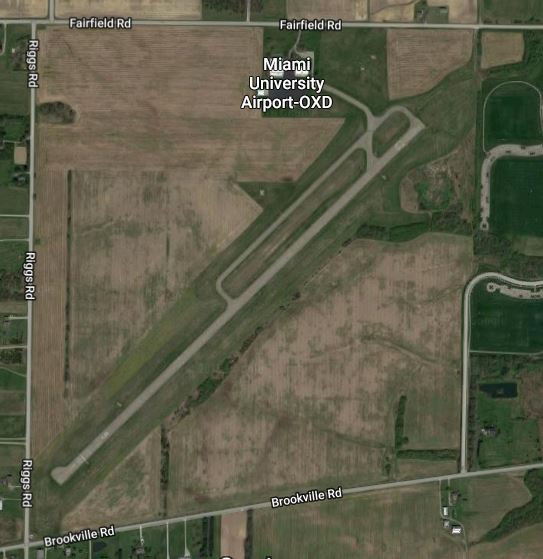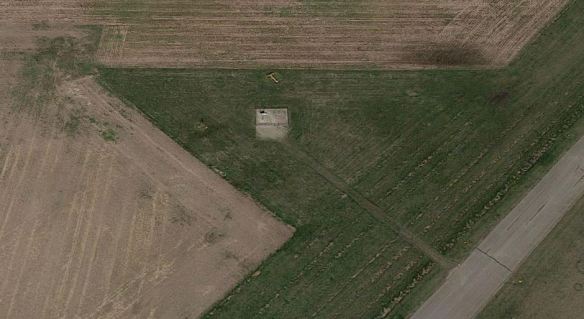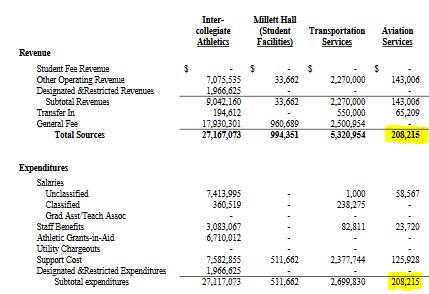To Miami University and President Crawford:
I have great respect for Miami University. I applied to your MBA program in late 2015 because I have great respect for your business program. My mother is a three time graduate of your school – a bachelors and two masters degrees in education – so I was raised to respect Miami University. I have been to your campus, and it is beautiful. I was there a couple of years ago to visiting your geothermal plant; as a meteorologist and someone who cares for the environment, it is wonderful to see a university not only take steps to become more sustainable and green but also improve their image through actions over words.
While I recognize your primary focus as a university – as your mission statement highlights – is to have an “unwavering commitment to liberal arts undergraduate education and the active engagement of its students in both curricular and co-curricular life,” your university is among a select few in our area to have an own and airport. It’s 3 miles west of campus and 2 miles west of downtown Oxford:

It’s a very convenient airport for those who want quick access to the university by airplane. With the drive being 56 minutes from CVG and 62 minutes from the Dayton International Airport, it’s ideally located between two major airports and two large cities.
I’m certain you know of this airport, but what you may not know is that there is a valuable piece of equipment sitting just north of your runway:

That fenced in area (with a path leading to it) contains an AWOS – or Automated Airport Weather Station. It’s actually one of the nicer ones out there. More formally known an AWOS III P/T, it can measure and report barometric pressure, altimeter settings for pilots, wind speeds and directions, the temperature, the dewpoint, visibility, sky conditions, cloud coverage, liquid precipitation amounts, precipitation types, and the direction of thunderstorms relative to the airport. This equipment creates valuable information for pilots but also to meteorologists.
This piece of equipment isn’t cheap. While the cost of these varies depending on what an airport wants, can afford, whether they can get nearby parts, and the year purchased, an article in The Leader-Herald in Gloversville, New York from 2017 claims a local airport manager purchased an AWOS for $240,000. I have heard costs for an AWOS closer to $70,000 or “above $100,000.” Regardless, the AWOS at your airport came at a significant cost to the university. Additionally, there are variable costs associated with keeping the AWOS up and running, including electricity to the system and replacement parts.
When I returned home and first started working in the Tri-State as a meteorologist in 2011, I began researching and understanding the processes that allow weather data to flow into various systems, including to the National Weather Service. In the years that followed, I worked with local airport managers to see if funding could be secured to share their weather station data out with the world by using a vendor. I am thankful that the Warren County, Ohio Airport; the Clermont County, Ohio Airport; the Fleming-Mason, Kentucky Airport; the Madison, Indiana Airport; the Fayette County, Ohio Airport; and the Batesville, Indiana Airport have all started sharing their airport weather station data with the Federal Aviation Administration (FAA) through a vendor. We have more local weather data than ever before.
But we don’t have the Miami University Airport’s weather station data. I believe it was 2013 when I first reached out to your airport manager about sharing your weather station data. He informed me at the time that he was interested in sharing the airport weather station data but also addressed cost concerns. I believe he spoke to his manager at the time, but the idea didn’t get much traction from the manager. After some time – perhaps a year – had passed, I called the airport manager again to express my continued interest in getting a feed of Miami University’s weather station data. His position had not changed, but I asked for his manager’s contact information this time. He obliged, and I reached out to his manager by phone. I never received a phone call from that manager, and I believe through an Internet search some months later that he had retired.
In the spring of 2017 and as I mentioned above, I came to your campus to see your geothermal plant and other nearby sustainability operations. I was impressed to see such forward thinking from a university. I also respected the business angle; being more sustainable benefits the bottom line.
While I was there, I connected with your marketing team and also your Director of Planning, Architecture & Engineering. I asked both parties about the possibility of sharing Miami University Airport’s weather station data out with the world. The marketing department responded to me in the days that followed with news that the university was not interested in sharing your airport weather station data. I followed up with the Director of Planning, Architecture, & Engineering in the days after I met him, and he responded saying that any additional operating expenses [at the airport, I assume] would make any additive costs prohibitive.
That takes us to today. I feel the need to clarify, publicly, the importance of your airport’s weather station data:
- Safety: Your weather station as measured severe wind gusts many times over the last few years. These measured gusts led to Severe Thunderstorm Warnings, which are issued to keep people safe and informed about dangerous storms. Many of those people placed in these warnings are your students and staff. Many of those people are also residents of Oxford. The National Weather Service has ways of accessing your weather station that the rest of the world does not; they have this ability in an effort to keep people safe, but know that because they do not have a stream of your data, they have to go looking for it. As a meteorologist, I want you to know that meteorologists depend on real-time weather station from local airports, especially during times of active and severe weather.
- Quality: Backyard, personal weather stations are not as reliable or accurate as airport weather stations. State-owned weather stations networks – like the Ohio Department of Transportation’s – are not as accurate as airport weather stations. I recognize that you can get real-time data from Oxford area personal weather stations or the ODOT weather station northwest of Oxford near the Ohio/Indiana border. While “close enough” may work for temperatures, visibility and wind measurements are not as reliable or accurate for non-airport weather stations. Airport weather stations also observe precipitation types and intensities; state and personal weather networks don’t measure that kind of weather data. Your airport weather station does. That’s why it’s important to share out your data.
- Marketing: Imagine media meteorologists sharing weather conditions from the Miami University Airport. Imagine pilots seeing weather conditions in the cockpit on their iPads and landing there because they know it is safe to land…and then they refuel and increase your revenues.
- Cost: There seems to be a misconception of the cost of sharing airport weather station data out to the world through a vendor. Yes, it true; you must use a vendor to share the AWOS data out through either an FAA-certified method or non-FAA-certified method. This process does not cost thousands of dollars. In fact, I’ve done the research on costs on sharing the airport weather station data through a vendor, and I want to share my research:
- Stanwyck Avionics (non-FAA-certified method, but still flows to NOAA’s secondary data stream where the National Weather Service and media can use it): $1,500 one-time software charge/cost and an annual fee of $300.
- RSINet (FAA-certified method): $60/month with a one year contract. No upfront costs through this vendor that I’m aware of.
- AnyAWOS (FAA-certified method): $70/month. No upfront costs through this vendor that I’m aware of.
Based on the price of Jet A and 100LL fuel on the Miami University Airport website, you could fund sharing your airport weather station data each month by selling about 15 gallons of gas. A Cessna 172 – a very common general aviation aircraft – has a fuel capacity of 42 gallons.
I looked at Miami University’s 2016-2017 operating budget, and found $70 a month would take 0.4% of the airport’s annual budget. Unfortunately, the revenue and expenses for the “airport services” segment of the operating budget are equal:

The Director of Planning, Architecture & Engineering was correct in saying that additional costs would make this segment unprofitable. Of course, the nominal cost of sharing AWOS data out with the world through a vendor can be budgeted. I am quite surprised – as a business person – that the “airport services” segment is the only one in the “Auxiliary Enterprises” umbrella that doesn’t generate a profit.
The marketing budget for the Farmer School of Business alone in 2015-2016 was $3.78 million. With an annual budget in the hundreds of millions, can Miami University not afford $840 a year to spend on sharing airport weather station data out through a vendor? This small expense is an investment in weather safety and awareness while also increasing marketing for the university. Your asset that costs tens of thousands of dollars next to the runway holds valuable data that only a select few can see now. For a fraction of the cost of that asset, you can share that quality data that comes from that asset with students, staff, the community, the media, meteorologists, pilots, and everyone in the world…and they will know what the weather is like at Miami University.
Sincerely,
Scott Dimmich

Once again I am left in awe with your brilliance. I do hope that the university will take your words to heart. I hope your new employer is utilizing your intelligence to the fullest. God speed Scott!
Wow! What a thorough presentation of your thoughts, data, information etc. Hopefully, your determination and information gathering, along with pictures and budget numbers will convince Miami to share their data for the good of all involved.